Solar pumps are empowering women farmers in India
Narrow roads lead to Harpur, flanked by small houses with expansive courtyards on both sides. Harpur is a small village perched at one corner of the Bandra block in Muzaffarpur district in the Indian state of Bihar, and though it may look like any other rural village, it is home to a group of women farmers who are at the forefront of a revolutionary change.
Historically, this region has grappled with water scarcity, which sharply limited the crops that farmers could cultivate. But since women-led self-help groups stepped in and installed solar pumps to provide affordable clean energy for irrigation, the scenario has changed dramatically. And along the way, these groups are challenging traditional gender norms, making women farmers a catalyst for climate adaptation.
“The installation of the solar pump allowed us to diversify our crops, particularly by growing vegetables [including cauliflower, pointed gourd, coriander, eggplant, and bitter gourd], significantly boosting our family’s income,” she says.
With the increased income from farming and irrigation services, Babli was able to purchase a sewing machine.
“With this new machine I am able to stitch petticoats and blouses and take orders locally,” she explains, “which enhances my additional income and reduces my dependence on my husband’s income.”
Sunaina Devi, 50, another member, describes the group’s journey since 2013. First, they started saving money through Aga Khan Rural Support Program-India (AKRSP-I). In 2016, they used their savings of around INR. 130,000 (about $1,562 US) to bore a well and install a solar irrigation pump to address their water issues.
Solar Pumps Are Empowering Women Farmers in India
On top of its climate benefits, the technology is boosting women’s income and confidence while challenging traditional gender norms.
Narrow roads lead to Harpur, flanked by small houses with expansive courtyards on both sides. Harpur is a small village perched at one corner of the Bandra block in Muzaffarpur district in the Indian state of Bihar, and though it may look like any other rural village, it is home to a group of women farmers who are at the forefront of a revolutionary change.
Historically, this region has grappled with water scarcity, which sharply limited the crops that farmers could cultivate. But since women-led self-help groups stepped in and installed solar pumps to provide affordable clean energy for irrigation, the scenario has changed dramatically. And along the way, these groups are challenging traditional gender norms, making women farmers a catalyst for climate adaptation.
Babli Devi, 35, a member of Shiv Ganga Samuha Sichai Samity self-help group (SHG) from Bandra block, says her life and her community have been transformed.
“The installation of the solar pump allowed us to diversify our crops, particularly by growing vegetables [including cauliflower, pointed gourd, coriander, eggplant, and bitter gourd], significantly boosting our family’s income,” she says.
With the increased income from farming and irrigation services, Babli was able to purchase a sewing machine.
“With this new machine I am able to stitch petticoats and blouses and take orders locally,” she explains, “which enhances my additional income and reduces my dependence on my husband’s income.”
Sunaina Devi, 50, another member, describes the group’s journey since 2013. First, they started saving money through Aga Khan Rural Support Program-India (AKRSP-I). In 2016, they used their savings of around INR. 130,000 (about $1,562 US) to bore a well and install a solar irrigation pump to address their water issues.
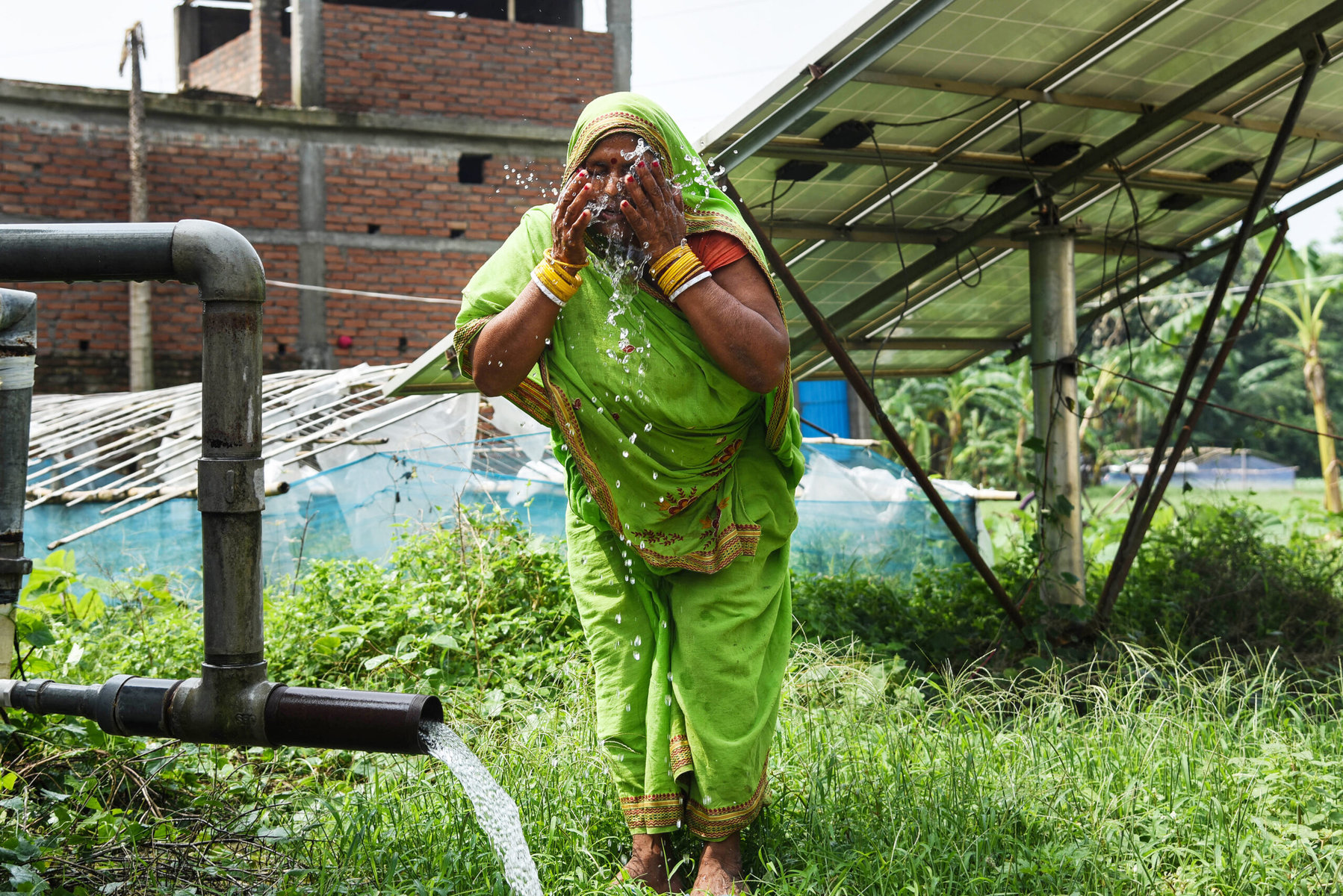
“After visiting several sites in Bihar where farmers had already installed solar pumps, we decided to set up our own,” Sunaina Devi says. “Now we have a reliable source of irrigation for agricultural activities, and we can supply water to over hundred farmers [at a cost of INR. 100 an hour] which is a valuable source of supplementary income for us. This generates an annual income of INR. 130,000 for the group.”
Each of the 10 members contributed INR. 13,000 ($156 US) as an initial investment. The total cost of the project was approximately INR. 700,000 ($8,410 US), with the remaining support provided by AKRSP(I). The project included a pump, a 300-foot borewell, a pump house and a 1,500-foot underground pipeline covering 30 to 35 acres of land.
According to Sunaina Devi, the pump operates for seven hours daily from January to June — peak summer here — and three hours a day from October to December. It’s not used at all during the monsoon, from July to September. The SHG has a rotation system through which each member helps manage pump operation and pipe distribution.
Such responsibilities have traditionally been carried out by men. “AKRSP-I primarily worked with male farmers in group irrigation programs,” explains AKRSP-I project lead Mukesh Chandra.
“However, as women members expressed interest and demonstrated their eagerness to participate in group irrigation, we saw the potential to address the pressing need for irrigation on the ground.”
Prem Vikas Samuha Sichai Samity, another SHG in Chandauli, 25 kilometers from Harpur, follows a similar model. Doing this work within a male-dominated society, the group has faced challenges, including discriminatory comments, according to one member, Anita Devi. But, she explains, their leader, Indu Didi, led by example in pressing on despite this discrimination.
“She confronted and challenged the gender norms and stereotypes that had previously prevented women from participating in roles typically considered male,” says Anita Devi, 34. “Indu Didi personally laid irrigation pipes and operating pumps.”
No longer dependent on their spouses for expenses, these women are able to use the money they earn for their children’s education and other household expenses. And beyond the financial advantages, playing a more active role in agriculture and taking control of their economic well-being has made them more confident, bringing them a sense of self-reliance and empowerment.
Out of Bihar’s 5.6 mn hectares of net cultivable area, 60 percent is currently under irrigation, mainly using diesel and electric pumps. Now, solar-powered irrigation is replacing expensive and polluting diesel pumps, making irrigation more accessible and affordable for smallholding farmers while reducing environmental impact. According to Chandra, thanks to the new pumps, revenue has increased by 30 to 40 percent in the last five years, and the cost of irrigation has fallen to a third of what it was before.
Going forward, solar power will be key as the country works to meet ambitious goals set out in its revised Nationally Determined Contribution. India plans to reduce greenhouse gas emissions and use more clean energy, aiming to get half of its total electric power from non-fossil fuel-based energy sources by 2030.
The Bihar Rural Livelihoods Promotion Society (JEEViKA) is a government organization focused on empowering women’s SHGs in the state. Seeing the potential for solar-operated pumps to improve livelihoods, it plans to scale this model with over a hundred SHGs across the state of Bihar. The goal is to transform SHGs into Irrigation Service Providers, each capable of supplying water to 50 to 100 farmers. In addition to the benefits of irrigating their own land, these farmers can make up to INR. 120,000 ($1,441 US) per year selling irrigation services to other farmers.
Still, there are challenges when it comes to financing and promoting these technologies. Sujata Kumari, 46, a community mobilizer working for JEEViKA, says her group at first struggled to set up a solar irrigation pump. She is an active member of Neer Samuha Sichai Samity, a SHG located in Chandauli village, which started in early 2022.
“Initially, we faced a hurdle when approximately 25 women were interested in participating, but upon learning that the installation would require a deposit of INR. 13,000 each, some hesitated and left. However, 10 determined members prevailed, and we managed to gather INR. 130,000. The remaining funds were secured through grants provided by the AKRSP-I,” Sujata explains.
Another woman farmer, 40-year-old Mamata Devi from Ragho Majholi village, part of Bochaha block in Muzaffarpur district, installed a solar irrigation pump recently, but says it took time to get the funds together. “It took six months to arrange the money,” she notes. “I received a partial loan from JEEViKA’s micro finance and the rest from relatives and neighbors.”
Several women farmers who have been part of JEEViKA for five to eight years in Muzaffarpur have embraced the technology.
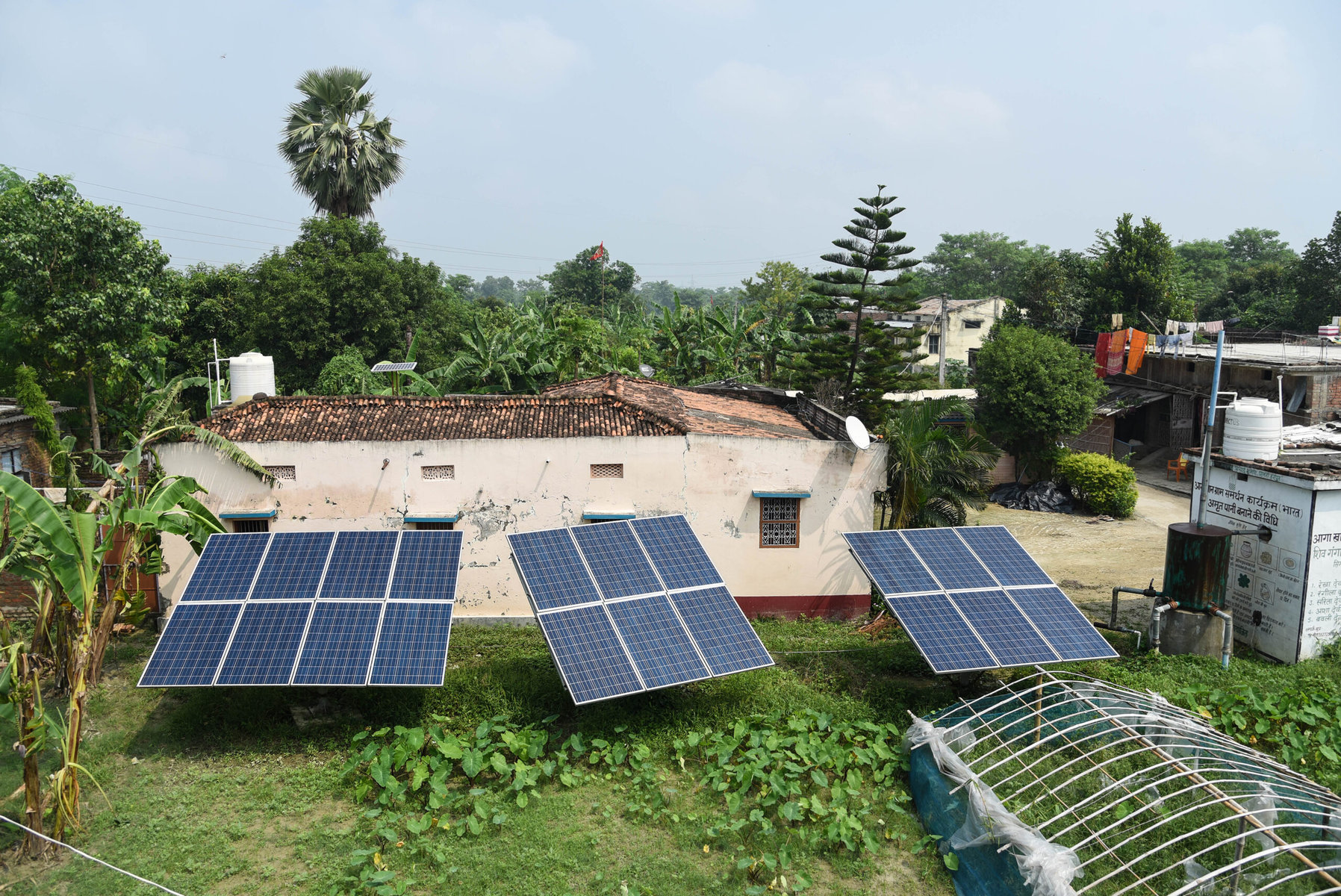
According to Sunaina Devi, the pump operates for seven hours daily from January to June — peak summer here — and three hours a day from October to December. It’s not used at all during the monsoon, from July to September. The SHG has a rotation system through which each member helps manage pump operation and pipe distribution.
Such responsibilities have traditionally been carried out by men. “AKRSP-I primarily worked with male farmers in group irrigation programs,” explains AKRSP-I project lead Mukesh Chandra.
“However, as women members expressed interest and demonstrated their eagerness to participate in group irrigation, [we] saw the potential to address the pressing need for irrigation on the ground.”
Prem Vikas Samuha Sichai Samity, another SHG in Chandauli, 25 kilometers from Harpur, follows a similar model. Doing this work within a male-dominated society, the group has faced challenges, including discriminatory comments, according to one member, Anita Devi. But, she explains, their leader, Indu Didi, led by example in pressing on despite this discrimination.
“She confronted and challenged the gender norms and stereotypes that had previously prevented women from participating in roles typically considered male,” says Anita Devi, 34. “Indu Didi personally laid irrigation pipes and operating pumps.”
No longer dependent on their spouses for expenses, these women are able to use the money they earn for their children’s education and other household expenses. And beyond the financial advantages, playing a more active role in agriculture and taking control of their economic well-being has made them more confident, bringing them a sense of self-reliance and empowerment.
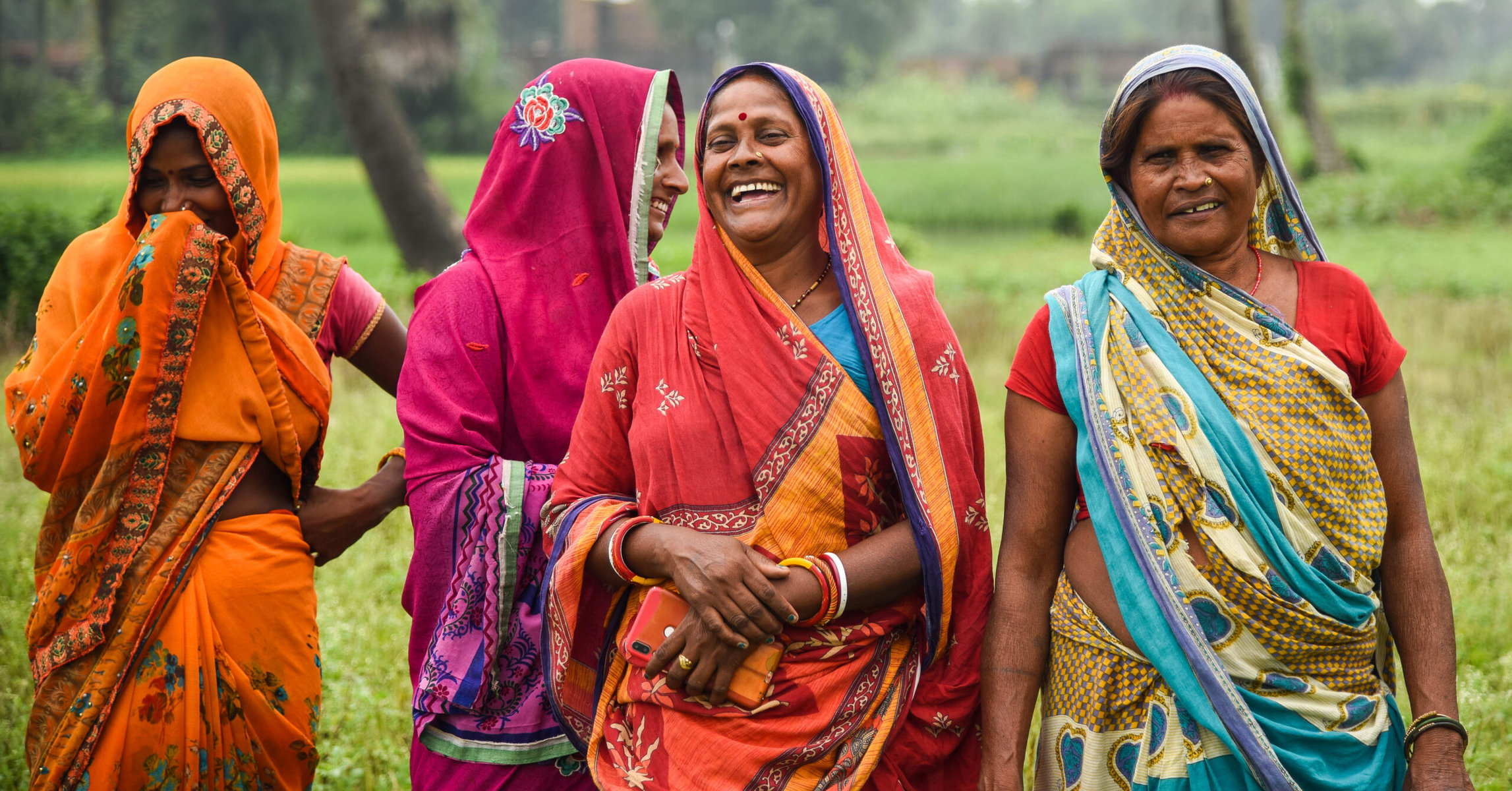
Out of Bihar’s 5.6 mn hectares of net cultivable area, 60 percent is currently under irrigation, mainly using diesel and electric pumps. Now, solar-powered irrigation is replacing expensive and polluting diesel pumps, making irrigation more accessible and affordable for smallholding farmers while reducing environmental impact. According to Chandra, thanks to the new pumps, revenue has increased by 30 to 40 percent in the last five years, and the cost of irrigation has fallen to a third of what it was before.
Going forward, solar power will be key as the country works to meet ambitious goals set out in its revised Nationally Determined Contribution. India plans to reduce greenhouse gas emissions and use more clean energy, aiming to get half of its total electric power from non-fossil fuel-based energy sources by 2030.
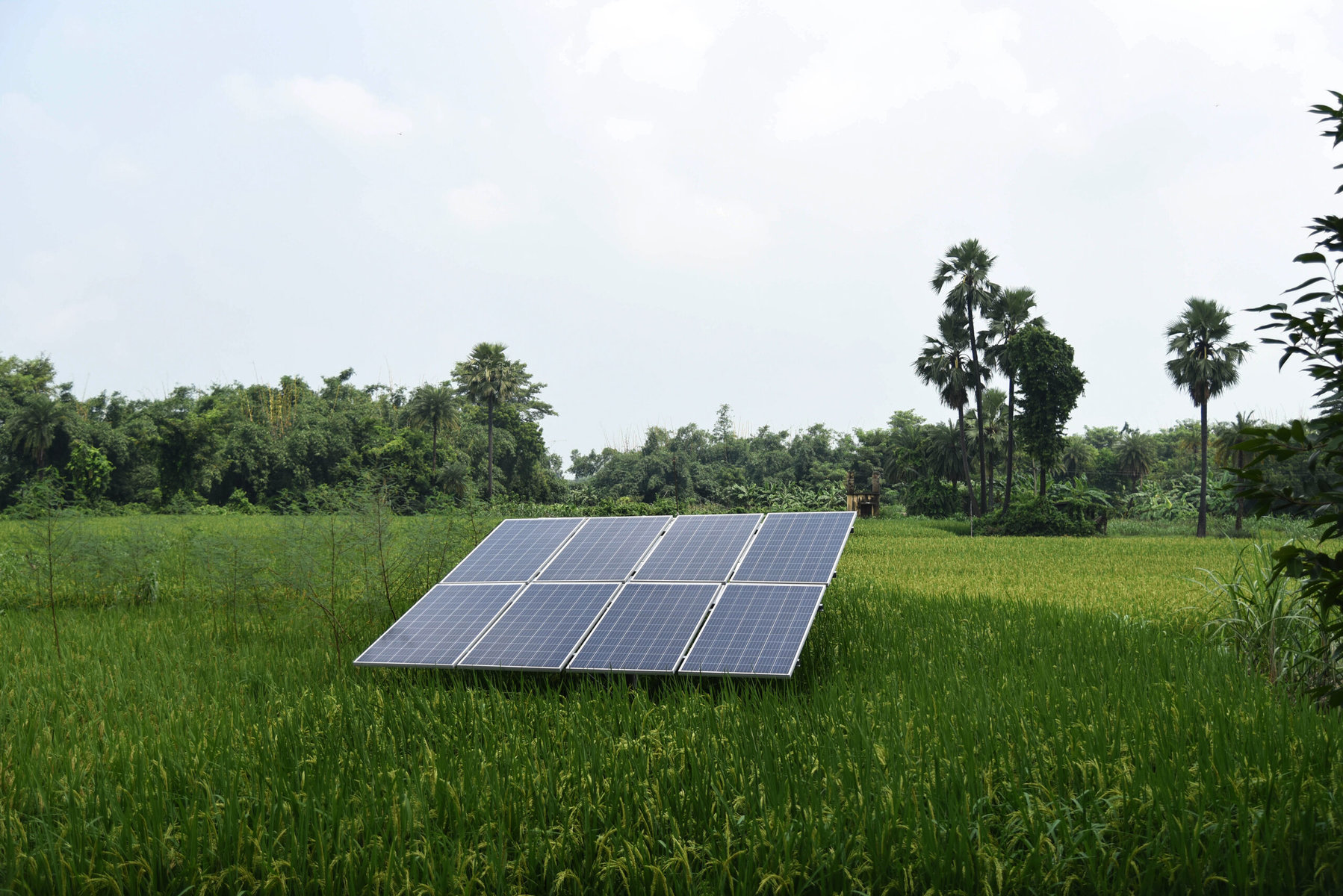
The Bihar Rural Livelihoods Promotion Society (JEEViKA) is a government organization focused on empowering women’s SHGs in the state. Seeing the potential for solar-operated pumps to improve livelihoods, it plans to scale this model with over a hundred SHGs across the state of Bihar. The goal is to transform SHGs into Irrigation Service Providers, each capable of supplying water to 50 to 100 farmers. In addition to the benefits of irrigating their own land, these farmers can make up to INR. 120,000 ($1,441 US) per year selling irrigation services to other farmers.
Still, there are challenges when it comes to financing and promoting these technologies. Sujata Kumari, 46, a community mobilizer working for JEEViKA, says her group at first struggled to set up a solar irrigation pump. She is an active member of Neer Samuha Sichai Samity, a SHG located in Chandauli village, which started in early 2022.
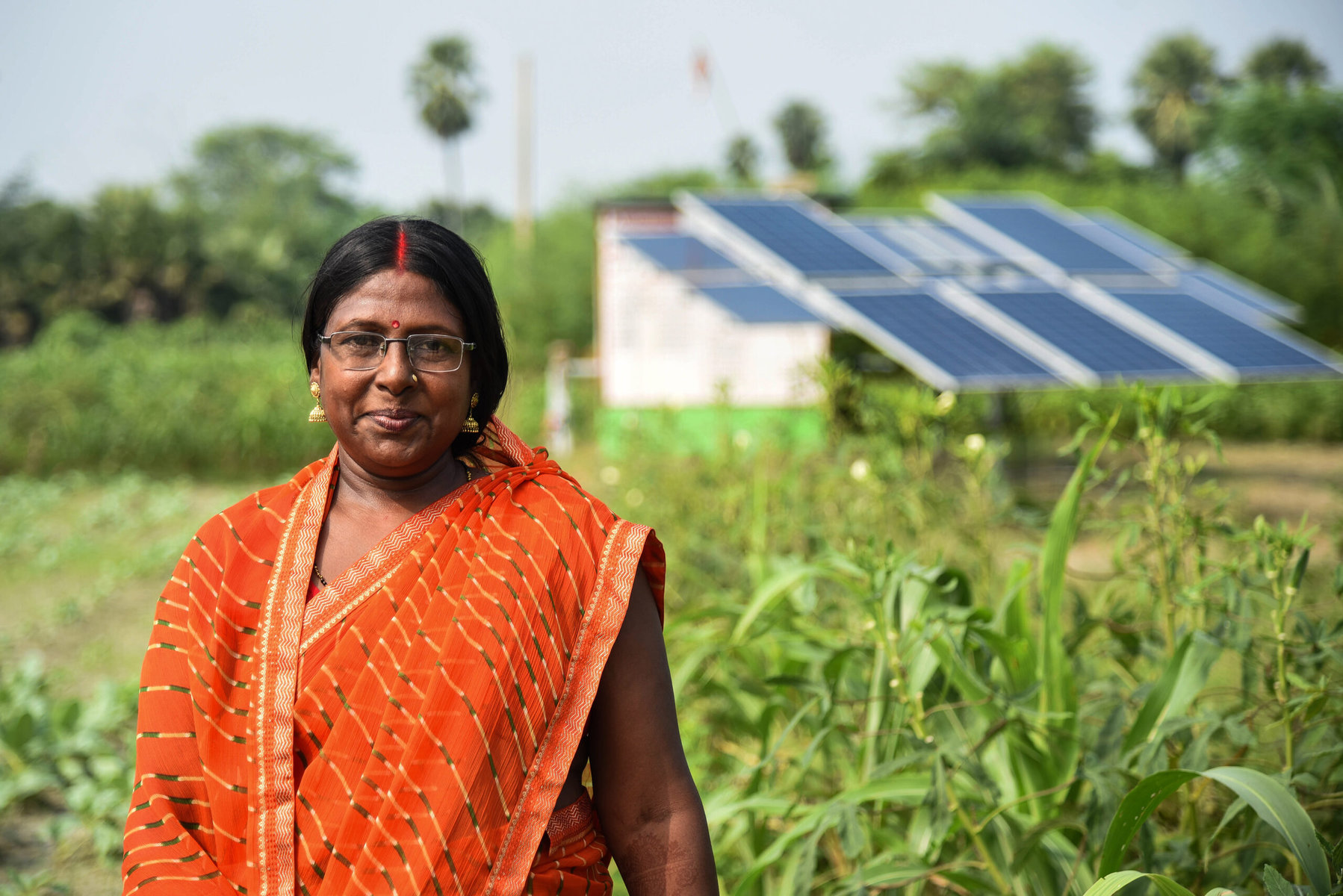
“Initially, we faced a hurdle when approximately 25 women were interested in participating, but upon learning that the installation would require a deposit of INR. 13,000 each, some hesitated and left. However, 10 determined members prevailed, and we managed to gather INR. 130,000. The remaining funds were secured through grants provided by the AKRSP-I,” Sujata explains.
Another woman farmer, 40-year-old Mamata Devi from Ragho Majholi village, part of Bochaha block in Muzaffarpur district, installed a solar irrigation pump recently, but says it took time to get the funds together. “It took six months to arrange the money,” she notes. “I received a partial loan from JEEViKA’s micro finance and the rest from relatives and neighbors.”
Several women farmers who have been part of JEEViKA for five to eight years in Muzaffarpur have embraced the technology.
However, because they are unable to get bank loans, many of them have had to depend on high-interest informal loans from their neighbors and relatives.
The lack of local maintenance support also presents challenges. The women have to travel to Patna, a city 100 kilometers away, to address technical issues and repairs. This leads to extra costs and long delays, affecting their ability to provide irrigation water to the farmers who depend on them.
Looking to the future, Parimita Mohanty, a researcher working at the United Nations Environment Programme in the Asia Pacific region, stresses the importance of adopting an integrated approach to women’s energy entrepreneurship programs in response to the climate crisis, including working with a wide range of stakeholders: financial institutions, different levels of government and practitioners on the ground.
Mohanty also points to the importance of replicating this model across different villages in Bihar and other parts of the country. As the success in Bihar has shown, this approach helps to build resilience in communities, increasing their ability to adapt in the face of environmental challenges, reducing their carbon footprint and granting financial stability to women farmers.
“Embracing more technology can transform agriculture and the livelihoods of smallholder women farmers,” says Sunaina Devi. “We need innovations where women play a key role.”
You can return to the main Market News page, or press the Back button on your browser.

